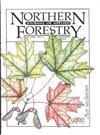Regional stem taper equations for eleven conifer species in the Acadian Region of North America: development and assessment.
引用次数: 86
Abstract
Taper models to predict upper stem diameters, as well as total tree volume, are presented for 11 major conifer species in the Acadian Forest Region of North America. The Kozak (2004. My last words on taper equations. For. Chron. 80:507–514) Model 02 taper equation was used as the base model form. A nonlinear mixed-effects modeling approach was used to account for autocorrelation present among multiple stem analysis observations collected from the same tree. Results show that fitted taper equations can accurately predict both stem form and volume across a range of conditions. The taper models generally had slightly lower bias and root mean square error than the commonly used regional Honer refitted volume equations (1965. A new total cubic foot volume function. For. Chron. 41:476 – 493). The mean absolute bias was reduced up to 28% for certain species using the fitted taper equations compared with the refitted Honer (1965) equations, although the refitted Honer’s models are also quite accurate where total stemwood volumes are needed. Independent validation data sets were used to further confirm reliability and accuracy of fitted taper models in predicting tree volume. These data sets indicated that the equations performed well, in general, but were slightly biased in certain thinned stands and in some New Brunswick ecoregions. Additional data are needed to confirm this and potentially improve model behavior. Overall, the models will be useful for predicting both stem form and merchantable and total volume.北美阿卡迪亚地区11种针叶树的区域茎锥方程:开发与评价。
采用锥度模型对北美阿卡迪亚林区11种主要针叶树种的上茎径和总树积进行了预测。科扎克(2004)。关于锥度方程的最后几句话。对。模型02锥度方程作为基本模型形式。使用非线性混合效应建模方法来解释从同一棵树收集的多个茎分析观测结果之间存在的自相关性。结果表明,拟合的锥度方程可以在一系列条件下准确地预测杆的形状和体积。锥度模型的偏差和均方根误差一般比常用的Honer区域修正体积方程(1965)略低。一个新的总立方英尺体积函数。对。编年史41:47 76 - 493)。使用拟合的锥度方程与修正的Honer(1965)方程相比,某些物种的平均绝对偏差减少了28%,尽管修正的Honer模型在需要总茎材体积的情况下也相当准确。使用独立验证数据集进一步确认拟合的锥度模型在预测树木体积方面的可靠性和准确性。这些数据集表明,这些方程在总体上表现良好,但在某些稀疏的林分和一些新不伦瑞克省的生态区域略有偏差。需要更多的数据来证实这一点,并潜在地改善模型行为。总的来说,这些模型对于预测茎型和可销售和总量都是有用的。
本文章由计算机程序翻译,如有差异,请以英文原文为准。
求助全文
约1分钟内获得全文
求助全文

 求助内容:
求助内容: 应助结果提醒方式:
应助结果提醒方式:


